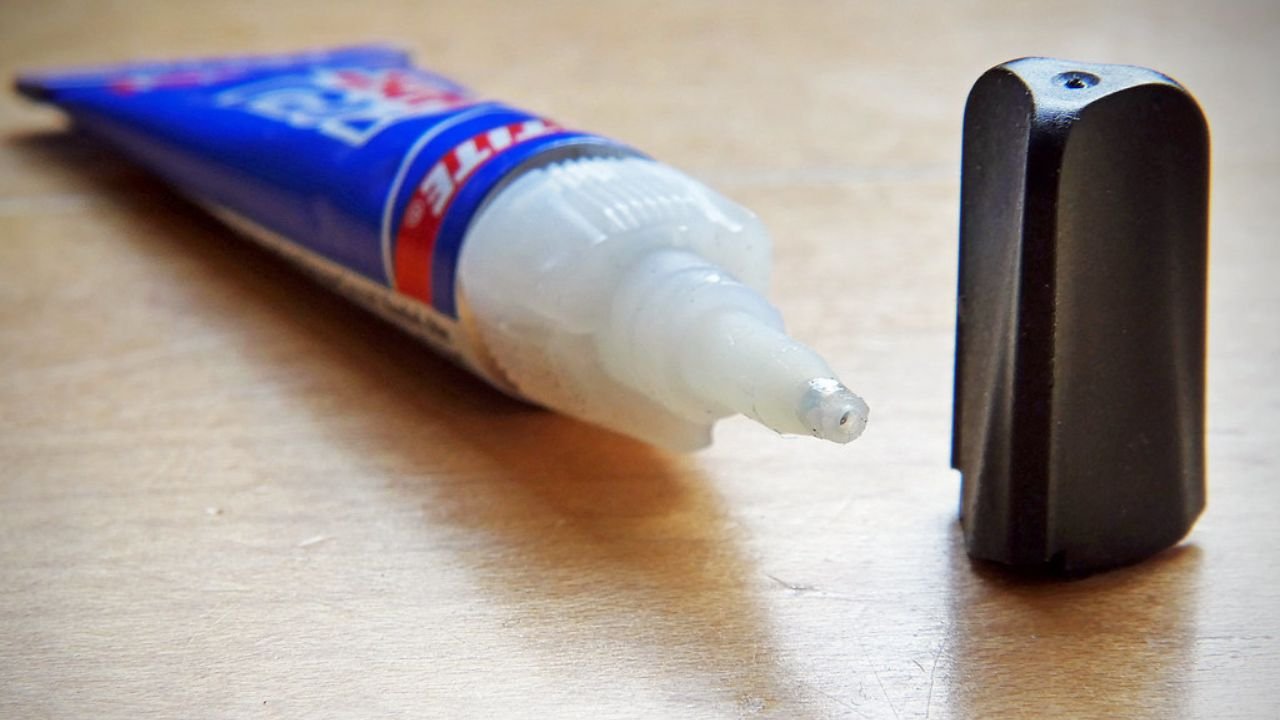Can You Bring Super Glue On A Plane? If you’ve ever found yourself on a plane with a broken item or in need of a quick repair, you may have wondered: “Can I bring super glue on a plane?”
This common question arises due to the variety of rules governing what you can and can’t carry in your luggage, especially when it comes to liquids and adhesives.
The good news is that yes, you can bring super glue on a plane. However, like most other substances, it must follow specific guidelines set by the Transportation Security Administration (TSA) and airline policies.
In this article, we’ll explore the key things you need to know when packing super glue, including its status as a liquid, how to pack it properly, and any potential challenges you might face. Let’s dive in.
Contents
What is Super Glue?
Super glue, or cyanoacrylate adhesive, is a fast-drying and strong adhesive commonly used for bonding materials like metal, plastic, glass, and ceramics.
Due to its incredible bonding strength, it’s a popular item for travelers who may need to make quick fixes during their trips. Whether it’s repairing a broken item or sealing a small crack, having super glue with you can save the day.
However, as with any potentially hazardous substance, there are regulations in place when it comes to flying with super glue. Understanding these guidelines can help you avoid any issues during your airport experience.
TSA Rules for Super Glue
The Transportation Security Administration (TSA) has specific rules governing what you can bring on a plane, especially when it comes to liquids, gels, and adhesives. Super glue falls into the category of a “liquid” under these regulations, which means it is subject to the TSA’s liquid rules.
Here are some key points to know about TSA regulations for carrying super glue:
1. Super Glue in Carry-On Bags
If you’re planning to carry super glue in your carry-on bag, there are a few rules to follow:
- Size Limits: Super glue must be in a container that is no larger than 3.4 ounces (100 milliliters). This is in line with the TSA’s 3-1-1 liquid rule, which applies to all liquids, gels, and aerosols.
- Packing in a Quart-Sized Bag: The container of super glue must fit inside your quart-sized, clear, resealable plastic bag with all other liquids and gels. Each passenger is allowed one bag of liquids, and it must fit comfortably inside the bag without exceeding the 3.4-ounce limit.
2. Super Glue in Checked Luggage
You are allowed to bring larger amounts of super glue in your checked luggage, as there are no specific size restrictions for adhesives in checked bags. However, the glue should be properly sealed to prevent leakage or spills. It’s a good idea to place the glue in a plastic bag to protect your clothes and other items from potential damage.
While checked baggage allows more flexibility with the amount of super glue you can carry, you should still check the airline’s specific rules, as some airlines may have additional restrictions.
Can Super Glue Be Considered Hazardous?
Super glue is generally not considered a hazardous material, but it does have certain properties that could raise safety concerns. The main risk associated with super glue is its flammability. The glue contains chemicals that, when exposed to heat, may release harmful fumes. Because of this, it’s important to handle and store super glue properly during your flight.
Flammability
While super glue is unlikely to ignite in the cabin, it is still classified as a flammable substance. This is one reason why TSA requires it to be packed in accordance with their liquid rules. You should also avoid placing super glue near sources of heat in your luggage, and always check the label for any specific warnings.
Pressurized Containers
Some super glue products come in pressurized containers. These types of adhesives can be problematic when flying, as changes in pressure during the flight can potentially cause the container to leak or burst. It’s essential to check the packaging before packing it in your bag. If your super glue is in an aerosol-style container or a pressurized can, it may not be allowed on the plane.
Tips for Packing Super Glue for Air Travel
To make sure you comply with all TSA regulations and avoid any issues while traveling with super glue, here are a few tips for packing your adhesive:
- Keep It in the Original Packaging
Keeping your super glue in its original packaging can help prevent leaks and ensure that it’s properly labeled. If you’re carrying a small tube or bottle, placing it in a resealable plastic bag will provide extra protection.
- Use a Travel-Sized Container
If you need to carry a larger quantity of super glue, consider transferring it to a travel-sized container that meets TSA’s 3.4-ounce limit. Many travel stores offer empty, small-sized containers designed for liquid items. Be sure to label the container to avoid confusion at security checkpoints.
- Store It Properly
When packing your super glue in your checked luggage, make sure it is tightly sealed and placed in a plastic bag to prevent any potential leakage. It’s also a good idea to place it in a sturdy, secure location within your luggage to avoid it getting crushed or punctured.
Alternatives to Super Glue for Air Travel
While you can bring super glue on a plane, it might not always be the most practical choice, especially for long flights or international trips. Depending on your needs, there may be other adhesive options that are easier to travel with.
- Travel-Sized Adhesives
Some brands offer travel-sized adhesives that comply with TSA regulations. These products are typically smaller in size, making them a convenient option for passengers looking to pack glue without exceeding the 3.4-ounce limit.
- Glue Sticks
For certain types of repairs, a glue stick can be a good alternative. They are non-liquid and can be safely carried on a plane without worrying about the 3-1-1 liquid rule. Keep in mind that glue sticks may not be as effective for all types of repairs as super glue.
- Patches and Tape
Depending on your specific repair needs, adhesive patches or heavy-duty tape might be suitable alternatives to super glue. These items are typically compact and easy to pack in both carry-on and checked luggage.
See Also: Can You Bring Cough Syrup On A Plane?
5 Frequently Asked Questions (FAQs)
1. Can I bring super glue on a plane in my carry-on?
Yes, you can bring super glue in your carry-on, but it must comply with TSA’s 3-1-1 liquid rule. The container must be no larger than 3.4 ounces (100 milliliters), and it must be packed in a quart-sized bag with other liquids and gels.
2. Can I bring super glue in my checked baggage?
Yes, you can bring super glue in your checked luggage without any specific size restrictions. However, it’s essential to pack it securely to avoid leaks or spills.
3. Is super glue flammable on a plane?
Yes, super glue is considered flammable, which is why it must be packed according to TSA’s rules for liquids. While the risk of ignition is low, you should still handle it with care and avoid exposing it to heat sources during the flight.
4. Can I bring super glue in an aerosol can on a plane?
No, aerosol cans of super glue are typically not allowed on planes due to the risk of pressure changes and potential leaks. It’s best to bring super glue in a non-aerosol form.
5. Can I bring super glue to an international destination?
You can bring super glue to most international destinations, but it’s essential to check the specific regulations of the country you are traveling to. Some countries may have stricter rules on adhesives and flammable items.
Final Thoughts: Can You Bring Super Glue On A Plane?
Traveling with super glue is relatively easy if you follow the rules set by the TSA and your airline.
Whether you need to make a quick fix during your flight or just want to have it on hand for emergencies, understanding how to pack and carry super glue will help you avoid unnecessary stress.
Just remember to check the size limits, pack it securely, and be aware of any special regulations that may apply to your trip. Safe travels!

Hello, I’m Janiyah Gibbs—a retired flight crew member and former TSA officer from Alaska, USA. At PlaneCarry.com, I share expert insights on what to carry (and avoid) when flying.

